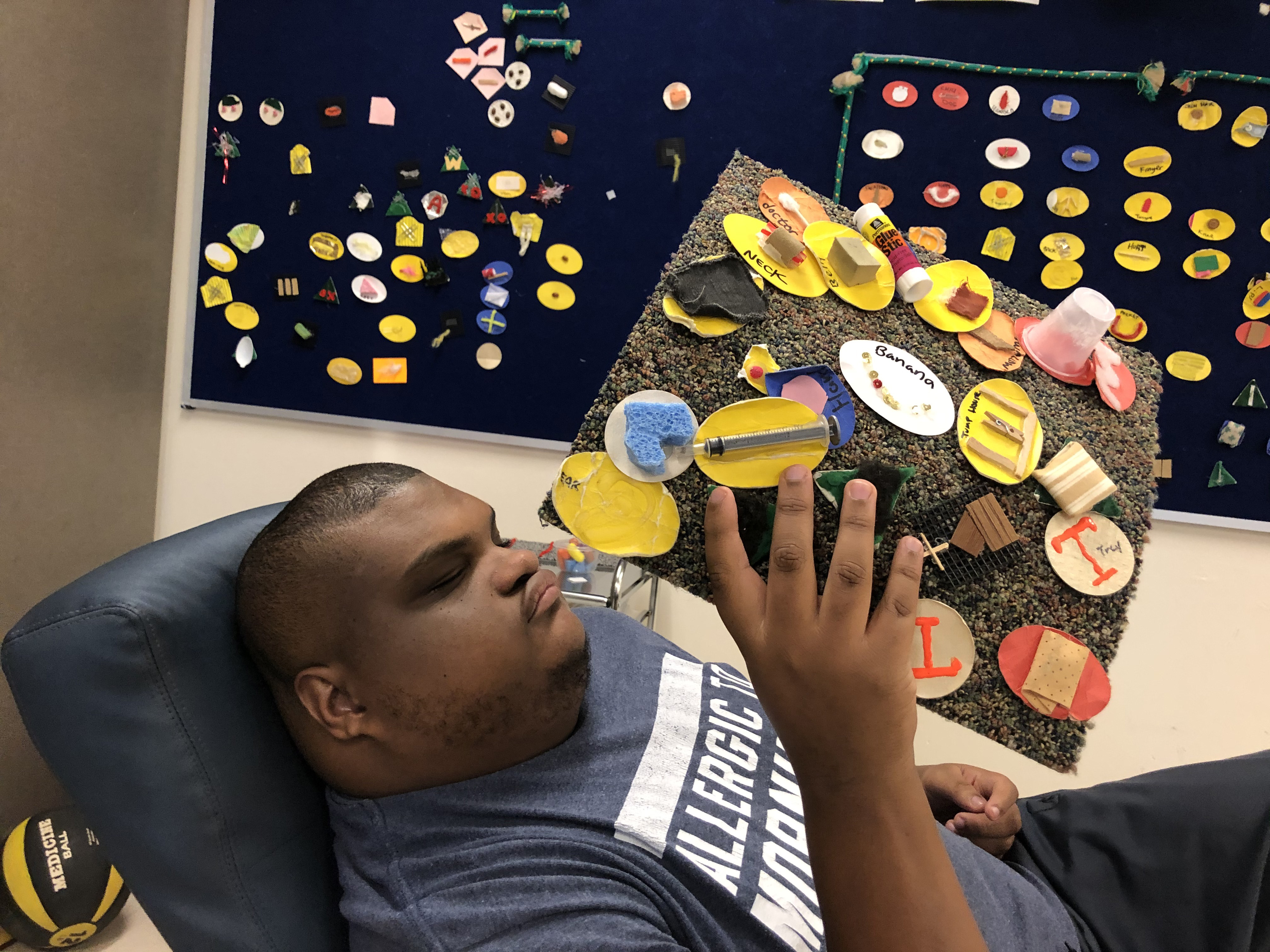Lesson 2 - Preparing for Learning
As you make plans to begin working with a child who is deafblind, there are a number of things that should be considered to help improve their learning. Lesson 2 provides specific information on the many ways a child’s deafblindness can impact teaching. Find out what you can do to set the stage for learning.
For more information, visit the National Center on Deafblindness at nationaldb.org.

Learning Objectives
Lesson 2 has three learning objectives. After completing the lesson, participants should be able to
- Describe how deafblindness impacts teaching and lesson planning
- Observe a child who is deafblind to gather information to inform teaching and learning
- Prepare the environment to maximize learning for a child who is deafblind
Part 1 - The Impact of Deafblindness on Teaching
In Part 1, you will learn about the impact of deafblindness on teaching. Discover what’s different and not so different about working with a child who is deafblind in the classroom, home, or other setting.
Activities
Instructors: The following activities can be adapted for a variety of purposes. For example, have participants turn in written or posted responses, or use the topics and questions as discussion starters. Some can also be used for group activities.
Option 1
In Part 1 of this lesson, you learned that working with a child who is deafblind impacts
- How you approach lesson planning
- How you and others interact with the child
- How you respond when things don’t go as planned
Identify a learning goal and a supporting activity you might implement with students in a classroom or a child in an early intervention setting. What potential changes might be made in each of these three areas to meet the needs of those who are deafblind?
Option 2
How might the transdisciplinary approach to teamwork support you as an educator, and how might this approach help a child who is deafblind?
Part 2 - Observing a Child Who is Deafblind
Part 2 focuses on what to look for when observing a child who is deafblind and why close observation is critical.
Activities
Instructors: The following activities can be adapted for a variety of purposes. For example, have participants turn in written or posted responses, or use the topics and questions as discussion starters. Some can also be used for group activities.
Option 1: If you have access to a child who is deafblind
Observe a child with deafblindness but avoid interacting with them. What do you notice about the following?
- What is the setting?
- What sensory channels are being used by the child?
- In what ways does the child use those senses?
- What does the child seem to hear and see?
- How does the child tactually explore objects and materials?
- What movements do you notice the child is doing?
- Do they seem posturally secure, or do they struggle to maintain balance?
- What activities, objects, and materials does the child seem to like?
Option 2: If you don’t have access to a child who is deafblind
Watch this video. What do you notice about the following?
- What is the setting?
- What sensory channels are being used by the child?
- In what ways does the child use those senses?
- What does the child seem to hear and see?
- How does the child tactually explore objects and materials?
- What movements do you notice the child is doing?
- Do they seem posturally secure, or do they struggle to maintain balance?
- What activities, objects, and materials does the child seem to like?
Part 3 - Preparing the Learning Environment
In Part 3, you will receive practical information on how to best prepare the environment to maximize learning.
Activities
Instructors: The following activities can be adapted for a variety of purposes. For example, have participants turn in written or posted responses, or use the topics and questions as discussion starters. Some can also be used for group activities.
Option 1: If you have access to observe or are working with a child who is deafblind, either at home or in the classroom:
Closely observe the child and how they use their available vision and/or hearing as well as their preferences and interests. Consider each of the following questions:
- Based on your observation (and/or what you know about the child), how is the child’s environment helping or hindering their access to information and learning?
- What types of devices and support (e.g., amplification, magnification, adaptive positioning) do you think might be helpful and why?
Option 2
Imagine that Maggie, a child who is deafblind, has been added to your third-grade classroom. Here’s what you learn about her:
- She has limited vision; she sees best when bright objects are shown on a dark background.
- She has some hearing but is sensitive to loud noises and easily distracted by them.
- She uses a wheelchair but can walk short distances with assistance.
- She is able to use her arms and hands.
- She has an intervener, who works with her throughout the day.
- She prefers to explore things tactually with her hands.
You must decide where to position Maggie’s primary workspace. Based on what you know about her, what choices will you make regarding how to best accommodate Maggie’s disability and preferences?
Quiz
Instructors are welcome to use this quiz as-is or adapt it to meet their needs. It can be used to test participants’ knowledge following completion of the module or for pre- and post-test evaluation. To obtain answers to the quiz, instructors should contact support@nationaldb.org.
Additional Resources
Educational Personnel
Information about the roles of team members who typically work with children who are deafblind and how they collaborate
Assessment
Links to numerous resources on assessment, including an overall approach and tools to assess a child's communication, learning, and use of sensory channels
Likes/Dislikes
Information and videos on how to determine a child’s preferences
Modifications to the Learning Environment
Resources on how to create environments that promote communication, learning, movement, and engagement with others
Preparing the Learning Environment: NCDB Practice Guide
Lists the skills a teacher or other adult working with a child or youth who is deafblind would do to prepare effective learning environments
